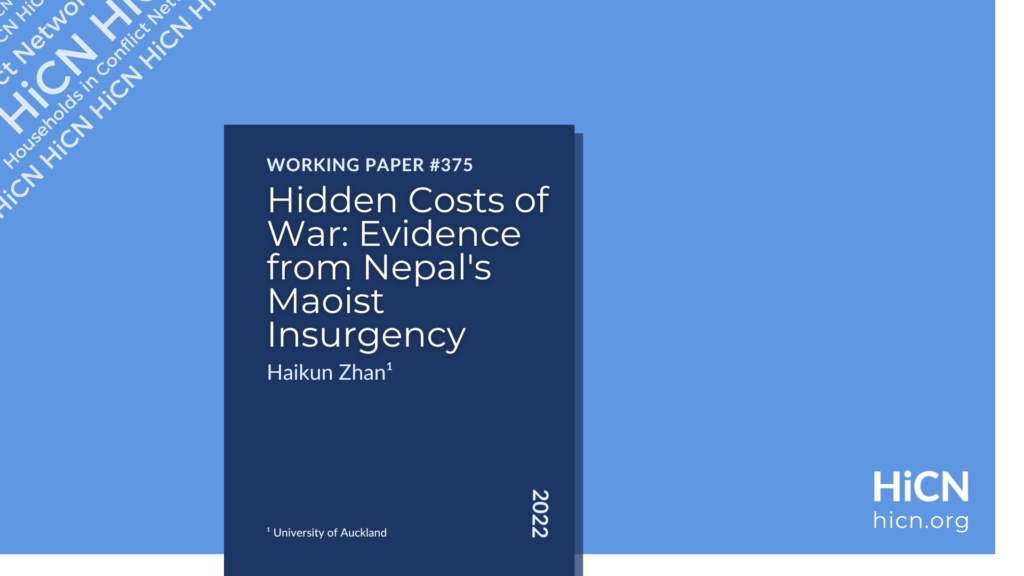
This paper uses a unique longitudinal dataset to examine the costly behavioral changes adopted by agricultural households in response to the 1996–2006 Maoist insurgency in Nepal. After the war onset, agricultural households that were exposed to high conflict intensity expand their crop cultivation choices—from mainly cereals to cereals and non-cereals—in order to avoid the Maoist tax on cereals. A one standard deviation increase in conflict exposure induced the average household to expand its number of non-cereal crops from 4.36 to 6.01, a 37.84% increase, while continuing to cultivate the same number of cereal crops. This behavioral change exposed households to greater income risk because the value of non-cereal crops is much more volatile. A risk-averse agricultural household would, as a consequence, suffer a 16.35% decline in welfare.